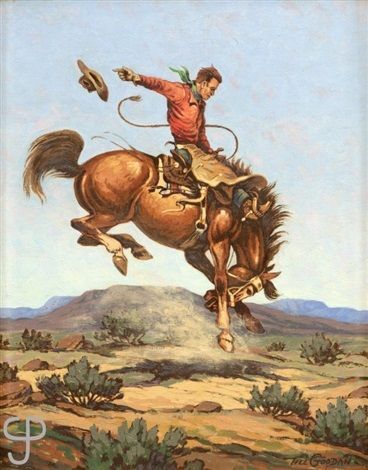Language of Cowboys and Horses II

The relationship between cowboys and their horses is in someway an ancient tradition. Each man seeks to know his horse, to count on the horse for the cowboy's livelihood and at times, in the long cattle rides, for survival. But wild horses must also be broken, and trained -- an arduous task for the cowboy. While the outcomes are usually good, especially in the hands of an experienced cowboy, it can still get rough at times.
This list comes from "Cowboy Lingo of Texas." If you might want to read more, you can search it in a good library. Here's the call number: GR 115.B7
The cowpuncher who rides into the herd and cuts out the horse desired is called a Peeler. The next step is to put the saddle or "the ellum (elm)and screw it down." Other words for saddle include include "hull" and "cack," a word describing the horse objecting to the saddle as though it were "cactus" on his back.
On cold mornings young broncos pitch or "frog walk" when first mounted. When a rider mounts the horse, he calms the horse down to correct the rolling gait.
Once the cowboy settles the horse, corrects the frog walking of his horse, he is said to have "found his seat." But if the rider is thrown off, the spectators say the rider was slow "hitting (catching, finding) his saddle. A cowboy "blows his stirrup" when he loses his foothold on the stirrup.
When a horse bucks he "wrinkles his spine," "folds up," or "boils over."
When the bucking bronco gets his head between his knees the cowboys say he "swallows his head" and when the horse pitches in this position, he "breaks into two."
Only a skilled cowboy can stay on the back of bronco, "breaking in two," and the cowboy rides the difficult horse whipping him with a "fan" --his cowboy hat.
When a rider who chooses not to scratch the bronco with his spurs he is "coasting on the spurs."
Midori Snyder's Blog
- Midori Snyder's profile
- 87 followers



